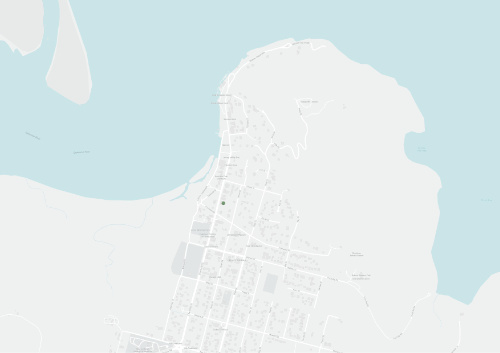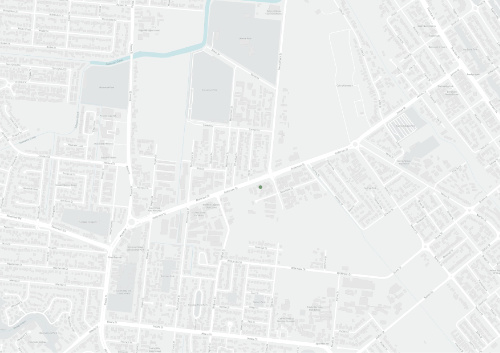Cape York Peninsula is a dream destination, the ultimate road-trip, for people who love four-wheel-driving, fishing and camping. Visitor numbers increase every year, and most take good care of the place. But a small minority are causing problems for other visitors, the region and its people.
Indigenous Communities
Related Content
Words and photos Juliana Foxlee
Springvale Station Nature Refuge is located 40km south west of Cooktown. Once a cattle station, the culturally – important property is now a refuge for a diverse range of vulnerable flora and fauna.
The Palaszczuk government purchased Springvale Station in 2016 in a bid to reduce sediment flowing from the degraded paddocks into the Normanby River.
The Queensland government is now investing in a new project which will support water quality outcomes and *Bama livelihoods.
Words and photo Robyn May
‘Manage landscape and all species benefit’ was just one of the many positive comments made during the feedback session following the 2019 Cape York Indigenous Fire Workshop.
This year’s workshop was held in July at Mary Valley and coincided with the school holidays, so lots
of kids were able to attend and learn an array of traditional fire and land management techniques while spending time on Country. This is critical as these children are the land and sea managers of the future.
Normanby Station’s Vince and Cliff Harrigan recently visited 12 primary schools in Victoria to share information about culture, country and life in Far North Queensland. The ‘classroom connections’, organised by Aboriginal cultural tour company Culture Connect, occurred over two weeks in March across Melbourne schools, and gave Victorian kids a rare opportunity to learn about Aboriginal culture and the unique features and history of the Balnggarrawarra homelands on Cape York.
The Communities and coastal habitats of eastern Cape York will benefit from the Australian Government’s Reef Trust funded, Catchments to Coral program. Running from 2021–2023, the project will invest in a broad range of activities that focus on improving the health and resilience of eastern Cape York catchments and coastal ecosystems.
In Episode 2 of My Cape York Life we continue the journey of Shelley Lyon and her family through Cape York Peninsula in far north Queensland. We travel to Cooktown, Lakefield National Park, the Great Barrier Reef and Steve Irwin Wildlife Reserve, learning about life in remote Cape York. We go beachcombing and exploring, and hear what's its like coming face-to-face with a crocodile.
Enjoy, subscribe, and please invite your friends to listen in.
Stories from the people who live, breathe and work Cape York Peninsula, managing the land and our future.
First episode available Friday 16 March 2018.
Play below, click to subscribe.
The theme music is Cape York by Black Image Band, used with permission from Vince Harrigan, Black Image Band.
This series is hosted by Cape York NRM's Lyndal Scobell, and produced by Richard Dinnen. Cape York NRM's on-line team are Ben Lister and Robyn May.
Mikayla Down and Wilfred Peter are Traditional Owners from Lama Lama Country, which hugs the northern coast of Princess Charlotte Bay on Cape York Peninsula.
Mikayla and Wilfred work as rangers with Yintjingga Aboriginal Corporation's Lama Lama Rangers caring for and managing traditional land and sea country from Silver Plains in the north to Marina Plains in the south.
Listen as Mikayla and Wilfred discuss life as a ranger, growing up in Cape York, and the responsibilities they hold as young Traditional Owners caring for their Country.
Sue Shephard moved to Cape York in 1970 to work at Musgrave Station for the Shephard family. She met the youngest Shephard son, Tom, got married, and together they raised four children on Artemis Station.
Artemis is a 125 thousand hectare cattle property between Laura and Coen on Cape York Peninsula. Sue tells some amazing stories of raising kids and cattle, caring for country, and researching the endangered golden shouldered parrot.
Louise Stone has lived a colourful life. She grew up on dairy farm on the Atherton Tablelands and has travelled Australia's east coast in horse and buggy. Louise can play almost any musical instrument she picks up, sings like a songbird and she once went on tour with Ester King from the Platters. She has a fascinating career working in Aboriginal communities in Queensland and Northern Territory, training Rangers in Conservation and Land Management. Until late last year, Louise was the Ranger Coordinator with Mapoon Land and Sea Rangers.
Billy Harrigan is the Cultural Officer with Wujal Wujal Aboriginal Shire Council and is a Traditional Owner from the area.
He has always lived in the south-east of Cape York and has worked hard throughout his life. Now, he is a few years from retirement. He has seen a lot of change in community, technology, environmental management and government policy.
Peter and Annette Marriott have done a lot in their time together on Cape York Peninsula.
The Marriotts run Ninda Creek, a 9,000 acre cattle property near Lakeland on southern Cape York.
Annette was born in Cooktown, and Peter moved to the Cape in the early 70s to manage Crocodile Station. 45 years later he hasn’t quite made the fortune he dreamed of back then, but Peter and Annette still love living and working on the Cape.
Stories from the people who live, breathe and work Cape York Peninsula, managing the land and our future.
First episode available Friday 10 February 2017.
Play below, click to subscribe.
Marie Shipton lives in Wujal Wujal and is a Traditional Owner from the area. The interview is recorded on Country at the mouth of the beautiful Bloomfield River, in the company of a patrolling crocodile.
Marie talks about growing up on the river, before being moved to Wujal Wujal by the Lutheran Church, and shares stories about her family, culture and life in the place where the rainforest meets the reef.
These days Marie works to preserve and share the stories and culture of her Country, as a Cultural Officer at Wujal Wujal Aboriginal Council.
Desmond Tayley is a Cape York leader, who has the rare distinction of being one of Australia’s youngest and longest-serving mayors.
As the Mayor of Wujal Wujal Aboriginal Shire Council, he describes his community as the place “so nice you’ve got to say it twice”.
Wujal Wujal, on southern Cape York, is where the rainforest meets the Great Barrier Reef. It’s an Indigenous community located in lush country on the banks of the Bloomfield River.
Wujal Wujal is south of Cooktown, north of the Daintree, and home to about 500 people.
In Episode 1 of My Cape York Life, we talk with Shelley Lyon - a ranger at Steve Irwin Wildlife Reserve - on the banks of the Wenlock River.
Shelley has spent over 40 years on Cape York working and living in some of Australia's most beautiful and remote places. In this episode we learn how Shelley and her family came to live on the Cape, and hear some funny and scary tales of her adventures over the years.
Vince Harrigan is a Traditional Owner and Ranger from Normanby Station in southern Cape York. The 31,400 acre property was returned to his family in the 1990s. The Harrigan brothers are caring for country and Vince says he can see Country becoming healthy again.
The Normanby River runs through the property into Princess Charlotte Bay – and Vince knows that work being undertaken on the property is having a positive impact the health of the reef.
Dr Wendy Seabrook is an ecologist, an innovator and a strategic thinker. She has worked around the world and is originally from London. She's worked with the giant Aldabra tortoises in the Seychelles and cane toads in northern New South Wales and on the Atherton Tablelands. And, "like many people (she) just ended up in Cooktown".
The Wujal Wujal planning scheme was released in 2013 by the Wujal Wujal Aboriginal Shire Council and set out the council's intention for the future of Wujal Wujal over the next 20 years from 2013.
The intent of the community plan is that it will represent the community’s views, visions and values for the future of the local government area, and set a strategic vision for what the community wants the area to be like in 10, 20 or more years.
This plan has been prepared after consideration of the following (as amended) pieces of legislation and plans:
-
Local Government Act 2009
-
Queensland Sustainable Planning Act 2009
-
Local Government (Finance, Plans and Reporting) Regulation 2009
The Napranum Shire Council released a community plan in 2012 looking at future development for (then) the next 10 years.
This community plan outlines how the community and council believe that the Mapoon area should develop between the 2010 and 2020 period and sets out how the issues affecting the Mapoon region at the time should've been addressed and a vision for the future Mapoon.
This document was released in March of 2012 following a 2007 Federal Court ruling which recognised the Eastern Kuku Yalanji people's of 129,600ha of country between the South Mossman River and just North of Black Mountain near Cooktown.

